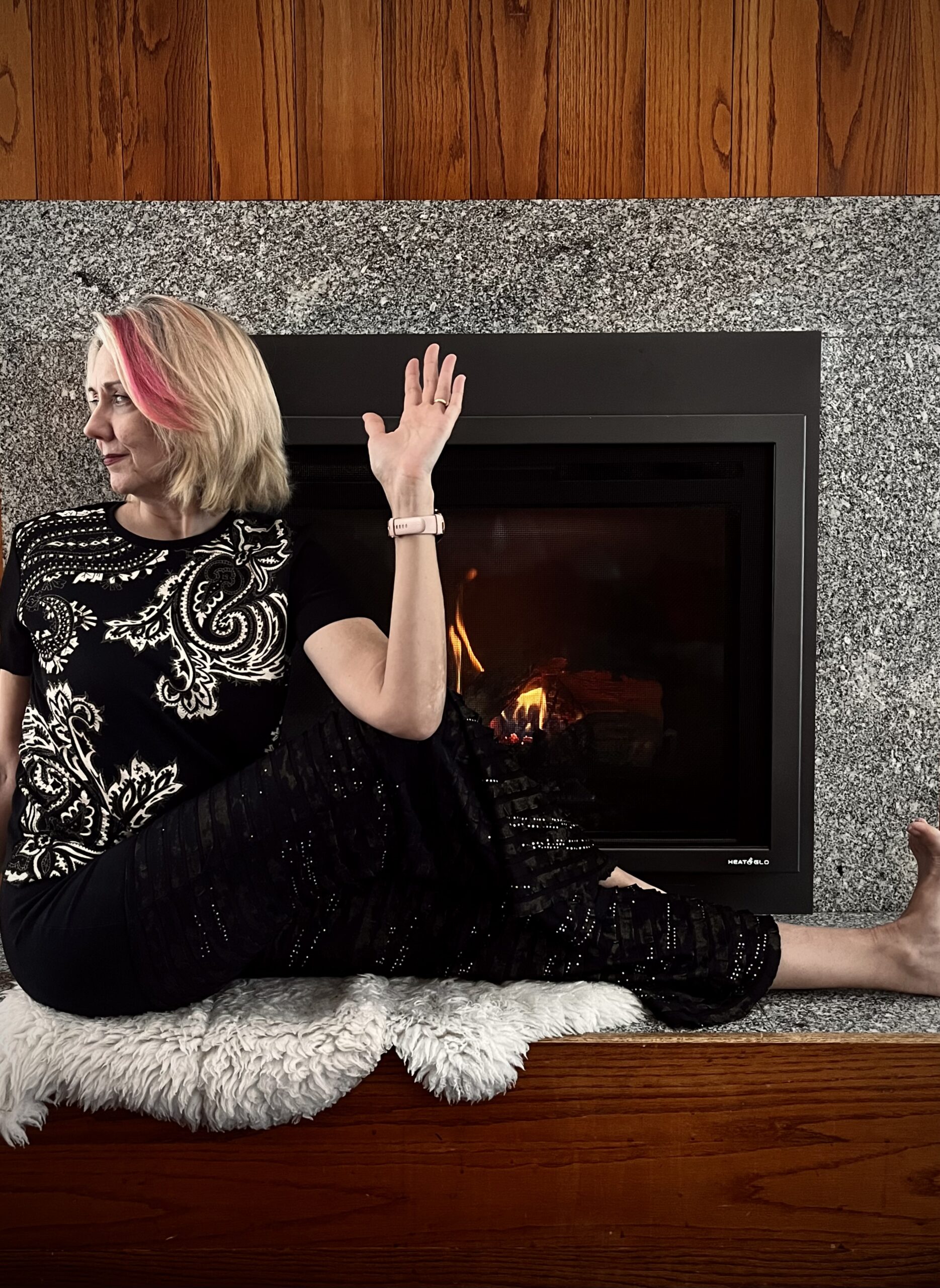
After sampling a variety of online yoga offerings, including FB Live, Zoom, and YouTube, I realize now the challenge for yoga teachers is similar to what it is in any large in-person setting: to make yoga feel like yoga and not just a follow-along, group exercise class. While instructors have to modify the way they teach to make this happen, the question is: what can you do as a student to make your experience more…yogic?
1) Set up a “safe space,” free from interruptions. No phone in the room, period! Close the door if you’re lucky enough to have one and make sure spouses, pets, kids –anyone who needs/demands attention from you is ON THE OTHER SIDE of said door, or better yet–out of the house. Explain in the nicest possible way that they are “errors” of meditation and that a high level of concentration and internal focus is required for true yoga. “The deeper states” of meditation are achieved by racking up consecutive moments of concentration. If they come into your space and distract you, you lose your momentum and have to start over. Plus, they need to know and accept that what you’re doing is simply more important than their perceived urgency–OPU–other people’s urgency–has no place in your yoga practice!
1.5) Set “reminders” for several classes a week, even though you don’t plan on doing them all. This is key as we’re losing our sense of linear time which is great while doing yoga, but makes it hard to show up to class. And, don’t let arriving late or having to leave early deter you; the ZOOM format is made for that–enjoy it while it lasts!
2) Have all of your props at the ready. Keep them in a pile somewhere so you don’t have to reassemble them every time. It’s Murphy’s Law: the one prop you don’t have will end up being the star of the class! If you haven’t “invested” yet in blocks, strap, blanket, or even a bolster, it’s time–what are you waiting for?
3) Set up your screen so the instructor has a fairly good view of you in both floor and standing poses when doing a live class. I have my laptop on a block for the floor and move it to a shelf or plant stand for standing poses. Figure it out ahead of time! If the instructor never leaves his/her mat to “check” on or interact with students, consider it a red flag.
4) Try not to make your screen your focal point!!!!! This may be the most important piece of advice. Eyes glued to a screen isn’t yoga–sorry. Set up focal points above or around your screen: a plant, a picture, a window. Try not to have your screen directly in front of you. Use it as a visual reference as little as possible. Try to follow the verbal instructions first and use the screen in small doses for verification. Do as much w/ your eyes CLOSED as possible!
5) Finally, this for people who don’t come to YogaHotDish classes: It’s important that you assess the difference in body types between yours and that of the presenter. This is where visually following along and trying to mimic each and every movement lands people in Physical Therapy.
First, know the difference between a yoga teacher and a yoga presenter. “Presenters” are there because they look good doing the poses and are good at memorized “cues” (lines) and putting together choreographed sequences. They’re not going to stop and check on your joints/spine–especially if it’s pre-recorded, silly! If you have NO idea how to modify the poses for your individual body type, (and it’s not that of a gymnast or dancer) watch out! If you don’t know your internal rotation from your external, you may be in over your head. At a minimum, try to find someone around your own age to follow. Better yet, follow someone who explains or “cues” for differences in body proportions, ranges of motion and actually demonstrates alternatives.
Most online presenters give a little legal disclaimer at the beginning (“you can modify”) but they don’t tell you how or when. Why not? Because it disrupts their flow, their presentation, or, they just aren’t experienced with or interested in working with people of all ages and stages of life. This holds especially true for SENIORS! I can’t tell you how many injuries I’ve heard of first hand when seniors start doing yoga or personal training w/ young and inexperienced instructors. Experience matters in yoga– you can’t put together a training course that magically endows / decades of wisdom –it literally takes…well…decades.
Finally, we have to accept that COVID is changing our bodies. We’re not moving as much. Often an injury can be just as much about what you DIDN’T do as what you did do! Muscles lose their pliability and “intelligence,” joints dry out and get creaky. Take care, lower expectations and good luck out there!








